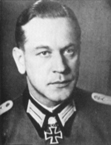Ike99
Posts: 1747
Joined: 1/1/2006
From: A Sand Road
Status: offline

|
quote:
No question about that should be patched.
Why am I surprised that the fellow who has spent a year complaining about the long lance also exploits gaming tactics as opposed to keeping it real?
Japanese carriers were night capabale Sula and they did have a landing system for night landings in 1942. Japanese carriers were not ¨behind¨ compared to US carrier night operations. The opposite is true actually. They were more advanced compared to US carrier capability at night.
Same as the Long Lance was superior to any torpedo of the western Allies btw. 
¨The apparatus, called chakkan shidoto (literally, landing guidance light), was invented at the Kasumigaura Naval Station in 1932 as a night landing aid. It was fitted on Japan's first carrier, Hosho, in 1933 and after being proved on Hosho, adapted to the other carriers. It was used both day and night from about 1934 onward.
The red and green lights were one kilowatt, variable in intensity, and each had a refractory mirror to produce a relatively narrow cone of light. The red light was mounted 10 to 15 meters (approximately 30 to 45 feet) aft of the green light.
It could be raised or lowered to adjust the separation between the two to vary the glide slope between four and six degrees, depending on the type of aircraft in the landing pattern.
The angle was usually 5.5 degrees for fighters and 5 degrees for attack aircraft.
As the pilot rolled in astern of the carrier with wheels, flaps and hook down while maintaining his own interval, he adjusted his flight path until he had both pairs of lights in sight. Losing Sight Of one or the other pair of lights indicated that the pilot was right or left of the ideal lineup, and called for a correction to regain the errant pair of lights and land on centerline.
The pilot adjusted his approach path so that the green light was
superimposed immediately over the red. If he could see only the red light, the aircraft was below the desired glide slope. If the red light was on top of the green, he was dangerously below glide slope. Conversely, if the green light was far above the red, he was too high on glide slope.
Due to the offset from the centerline and the narrowness of the cone of light, the pilot would lose sight of the landing aids somewhere prior to touchdown. Presumably, if he had kept the lights lined up properly just before he lost sight of the lights while close to the deck, he would be in the ideal “cut” position.
From here, as with his U.S. counterpart, he would then make final lineup corrections and land."
< Message edited by Ike99 -- 5/29/2008 7:42:49 AM >
|
 Printable Version
Printable Version

 and at the day, we have nearly 1:1 air loses. it is the night air combat what upsets me a little bit.
and at the day, we have nearly 1:1 air loses. it is the night air combat what upsets me a little bit. 











 New Messages
New Messages No New Messages
No New Messages Hot Topic w/ New Messages
Hot Topic w/ New Messages Hot Topic w/o New Messages
Hot Topic w/o New Messages Locked w/ New Messages
Locked w/ New Messages Locked w/o New Messages
Locked w/o New Messages Post New Thread
Post New Thread